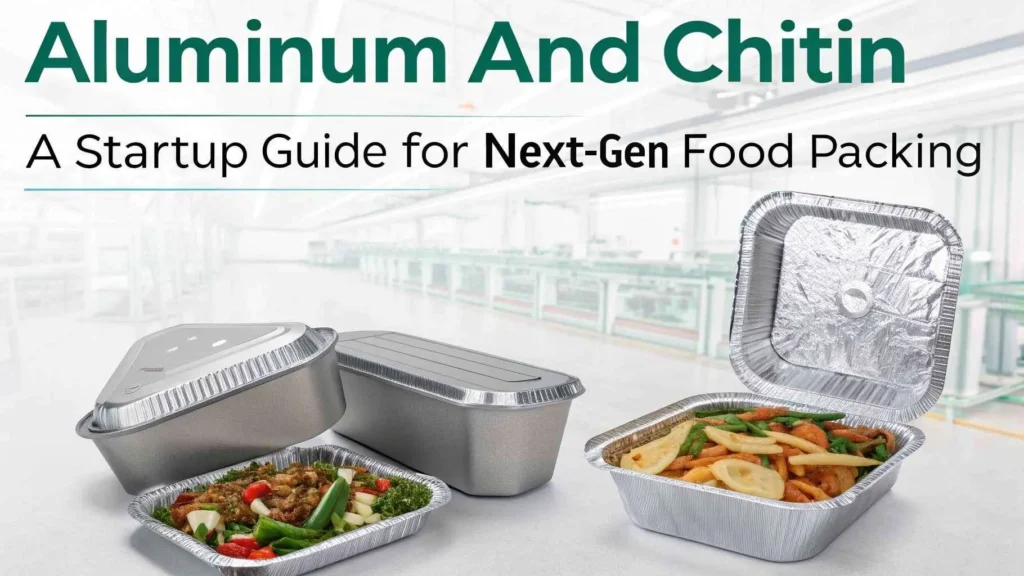Paint is an essential material used across residential, commercial, and industrial sectors to provide color, protection, and aesthetic value to surfaces. Over the decades, paint technology has evolved significantly with the advancement of chemistry and manufacturing techniques. Today, paints are formulated for a wide variety of applications—ranging from decorative coatings to specialized protective finishes for harsh environments. Understanding the core paint manufacturing formulas for white, tinted, and metal paints is crucial for those looking to enter the industry, improve existing products, or gain insights into the science behind color and coating.
Understanding the Core Components of Paint Manufacturing Formulas
Before diving into specific formulas, it’s important to understand the basic composition of all paints. A typical paint manufacturing formula contains the following ingredients:
-
Binders/Resins: These are film-forming agents that hold the pigment particles together and ensure adhesion to the painted surface. Common binders include acrylics, alkyds, epoxies, and polyurethanes.
-
Pigments: Pigments give color and opacity to the paint. Titanium dioxide is used in white paints, while metal oxides and organic pigments are used in tinted and metallic finishes.
-
Solvents/Thinners: These are used to adjust the viscosity of the paint, making it easier to apply. Water-based paints use water as a solvent, while oil-based paints use organic solvents.
-
Additives: These are used to improve paint properties such as flow, drying time, UV resistance, mildew resistance, and leveling.
Let’s now explore in detail the paint manufacturing formulas for white, tinted, and metal paints.
See Also:biodegradable Products
1. White Paint Formula
White paint is one of the most commonly produced and consumed types due to its versatility and usage in both interior and exterior applications. Titanium dioxide (TiO?) is the primary pigment due to its high hiding power and brightness.
Basic Formula for White Paint (Water-Based Acrylic):
-
Water: 25%
-
Titanium Dioxide (TiO?): 20%
-
Acrylic Binder (Pure Acrylic or Styrene-Acrylic): 30%
-
Calcium Carbonate (extender): 10%
-
Thickener (HEUR or HEC type): 1%
-
Dispersant: 0.5%
-
Defoamer: 0.2%
-
Biocide/Preservative: 0.3%
-
Coalescent: 1%
-
Ammonia/Neutralizer: As required to maintain pH ~8-9
Manufacturing Process:
-
Premix Stage: Disperse pigments and extenders in water along with dispersants and defoamers using a high-speed disperser.
-
Grinding Stage: Ensure the pigment is fully dispersed to avoid agglomeration and maintain opacity.
-
Let-down Stage: Add binder, thickener, and coalescent agent.
-
Adjustment: Adjust pH and viscosity.
-
Packaging: Fill in containers after filtration.
This formulation offers excellent hiding power, flow characteristics, and whiteness. It can be further modified for durability and sheen levels.
2. Tinted Paint Formula
Tinted paints are made by adding colorants or pigments to a white or neutral base. These can range from light pastels to bold accent colors. The color strength depends on pigment concentration and dispersion quality.
Basic Formula for Tinted Paint (Mid-Tone):
-
Water: 22%
-
Titanium Dioxide (TiO?): 10% (if base is off-white)
-
Color Pigments (Red, Yellow, Blue, etc.): 3–6%
-
Acrylic Binder: 30%
-
Calcium Carbonate or Talc: 15%
-
Thickener: 1.2%
-
Dispersant: 0.5%
-
Defoamer: 0.2%
-
Wetting Agent: 0.3%
-
Biocide: 0.3%
-
Coalescent: 1%
Manufacturing Notes:
-
Color Dispersion: Proper pigment dispersion is key to preventing streaks or uneven coloration.
-
Compatibility: Ensure the colorants are compatible with the binder to prevent flocculation.
-
Adjustment: Viscosity and color consistency must be adjusted using standardized tools like a color spectrophotometer.
Tinted paints are usually produced in base formats (Base 1, Base 2, Base 3) and tinted using universal colorants at retail points. However, bulk formulations require in-lab blending for quality control.
3. Metallic Paint Formula
Metallic paints contain aluminum flakes or other reflective particles that create a shiny, metallic effect. They are used extensively in automotive finishes, appliances, and decorative paints.
Typical Formula for Metallic Paint:
-
Water or Solvent: 20%
-
Aluminum Paste or Bronze Powder: 10%
-
Pearlescent Pigments (optional): 2%
-
Binder (Polyurethane, Epoxy, or Acrylic): 30%
-
Rheology Modifier (Thickener): 1.5%
-
Dispersant/Wetting Agent: 0.5%
-
UV Stabilizer: 0.5%
-
Leveling Agent: 0.3%
-
Coalescent (if water-based): 1%
Manufacturing Steps:
-
Avoid Over-Dispersion: Metallic flakes are delicate; over-shearing can damage their reflective surface.
-
Controlled Addition: Add aluminum flakes during the let-down stage to maintain shine and orientation.
-
Sheen Adjustment: Use additives and surface tension modifiers to control the gloss.
Due to their sensitive appearance, metallic paints require advanced quality control including angle-dependent color measurements, spray application testing, and sometimes multi-coat layering (base coat + clear coat).
Key Considerations in Paint Manufacturing
While formulas serve as a guide, each manufacturing unit must consider several other variables to ensure the success of their paint manufacturing formulas:
-
Climate Conditions: High humidity may affect drying times; choose additives accordingly.
-
Local Regulations: VOC limits and environmental norms vary by country or region.
-
Raw Material Availability: Substitutions may be necessary based on cost and availability.
-
Shelf Life & Stability: Ensure microbial resistance and dispersion stability over time.
-
Application Method: Formulas may vary depending on whether the paint is applied by brush, roller, or spray.
Customization & Innovations
Innovation is at the heart of modern paint manufacturing formulas. Paint manufacturers are now developing low-VOC or zero-VOC paints, anti-microbial coatings, thermal insulating paints, and self-cleaning formulations using nanotechnology.
Smart coatings embedded with sensors or temperature-responsive compounds are also entering the market. To stay competitive, R&D departments must work continuously to develop eco-friendly and performance-driven formulations.
Machinery and Production Scale
To scale up any paint manufacturing formula, the following equipment is typically used:
-
High-speed dispersers
-
Sand mills/bead mills for pigment grinding
-
Mixing tanks with stirrers
-
Storage tanks with temperature controls
-
Automated filling lines
Safety is paramount, especially when dealing with flammable solvents or heavy metal pigments. All facilities must adhere to local chemical handling and storage regulations.
Costing and Commercial Viability
Cost-effectiveness is critical for successful market penetration. While formulating paints, manufacturers must balance quality with pricing. This involves:
-
Optimizing pigment and extender ratios.
-
Reducing wastage during dispersion.
-
Using multifunctional additives to replace multiple ingredients.
Moreover, by automating production and improving batch consistency, units can reduce labor costs and increase profitability.
See Also:Pig Farming Business
Final Thoughts
The development of successful paint manufacturing formulas relies on a deep understanding of materials, processes, and market demands. Whether it is basic white paint, vibrant tinted shades, or advanced metallic finishes, formulation science plays a pivotal role in delivering products that meet customer expectations and regulatory standards.
For entrepreneurs and manufacturers, mastering the principles of paint manufacturing formulas can open doors to both local and international markets. With the global paint and coatings market expected to grow steadily in the coming years—driven by construction, automotive, and industrial sectors—this field presents exciting opportunities for innovation, sustainability, and profitability.
Contact Us
More Posts
From Milk to Millions: Dairy Startups in India — Opportunities & Roadmap
Dairy Startups in India: From White Revolution to Global Expansion India is more than just the world’s largest milk producer. It is also a superpower. India produces

From Farm to Functional food startups: India’s $25B Ingredient Revolution
The Dawn of a Functional Food Startups Revolution India’s Functional food startups sector is undergoing a transformation. The country’s food industry is undergoing a transformation. It

Aluminum and Chitin: The Ultimate Startup Guide for Next-Gen Sustainable Food Packaging
Food safety and sustainability are no longer optional; instead, they are the two key engines driving innovation in the global packaging sector. In particular, India’s

From Seed to Success: A Startup’s Guide to Dominating India’s Vegetable Seed Market
India’s farms are not just fields of the past anymore; they’re becoming laboratories of tomorrow. Farmers are now armed with apps, drones, and soil sensors,
Send Us A Message
Send Us A Message
Categories
- World wide Business Opportunities
- Wood Based Products
- Wood and Wood Products
- Wire & Cable Projects
- Wax And Polish Industry
- Water Industry (Distilled Water)
- Waste Management and Recycling
- Vermiculture and Vermicompost Industry
- Uncategorized
- Tobacco And Pan Masala
- Textile Industry
- Surgical
- Stationery Products
- Startup Consulting Services
- Sport
- Spices
- Soaps and Detergents
- Small
- Services Sector
- Sanitary Napkins And Pad
- Rubber Projects
- Rice Husk Based
- Rice and Rice Based Products
- Resins Industry
- Renewable Energy
- Refinery Project
- Readymade Garment Industry
- Ready to Eat Food Item's
- Projects
- Project Report
- Potato And Potato Based Products
- Plastic Projects
- Plastic Industry
- Pipes And Tubes Based Projects
- Pharmaceutical industry
- Petroleum Based Products
- Pesticides
- Paper Industry
- Paint Industry
- Packaging And Printing Industry
- Oils and Fats
- Monthly Magazine
- Minerals & Mineral Processing Industry
- Mineral water
- Milling Industry
- Milk & Dairy Products
- Men's Shaving Industry
- Medical Plastics
- Medical Disposables
- Marble
- Maize
- Livestock Farming
- Leather Goods
- Jute And Jute Based Project
- Iron And Steel Projects
- Investment Opportunities
- information
- Industrial Gases Projects
- Hotel and Hospitality Projects
- Herbs And Herbal Based Products
- Health Care Sector
- Gypsum and Gypsum-Based Products
- Gums and Binders
- Government Projects
- Glass Based Projects
- Ginger And Garlic Products
- Fuels
- Fruits and Vegetables
- Food Processing And Agriculture Projects
- Fisheries and Aquaculture
- Fertilizers – Inorganic And Organic
- Ferrous and Non – Ferrous
- ferroalloys
- farming
- Ethanol And Alcohol Industry
- Essential Oil And Oleoresins
- Entrepreneur India monthly magazine
- Engineering Goods Projects
- Electroplating And Metal Projects
- Electronic Project
- Education Sector
- Eco Friendly Products
- E- Vehicle Projects
- Disposable Products
- Disposable Medical Products
- Disinfectants
- directory database
- Cow Based Products
- Cosmetic And Beauty Products
- Copper Products
- Construction & Building Materials Projects
- Concrete & Cement Industry
- Cold Storage
- Cold Chain
- Coconut Products
- Cloud Kitchen
- Chemical Industry
- Chemical
- Cereal Food Processing
- Cashew Value Added Products And Projects
- Carbon Fibers
- Business Plan
- Business Opportunity In Middle East Countries
- Business Opportunities In Asia
- Business Opportunities In Africa
- Books Banner
- Books
- Biotechnology and Biotech Sector
- Biodegradable Products
- Best Business Opportunities in India
- Battery Projects
- Banana Products
- Bamboo And Bamboo Products
- Bakery and Confectionery
- Automobile Industry
- Aluminium Products Project
- Alcoholic and Non-Alcoholic Beverages
- Agrochemicals
- Agro Based Products
- Agriculture Industry
- Agriculture Farming
- Adhesives and Sealants
- Activated Charcoal
- Activated Carbon
- Abrasive, Asbestos, Cement, Refractory Products
Welcome to NPCS, your premier industrial consultancy partner. Discover our tailored solutions and global expertise for entrepreneurial success.
Subscribe Now
Don’t miss our future updates! Get Subscribed Today!
©2024. NPCS Blog. All Rights Reserved.

